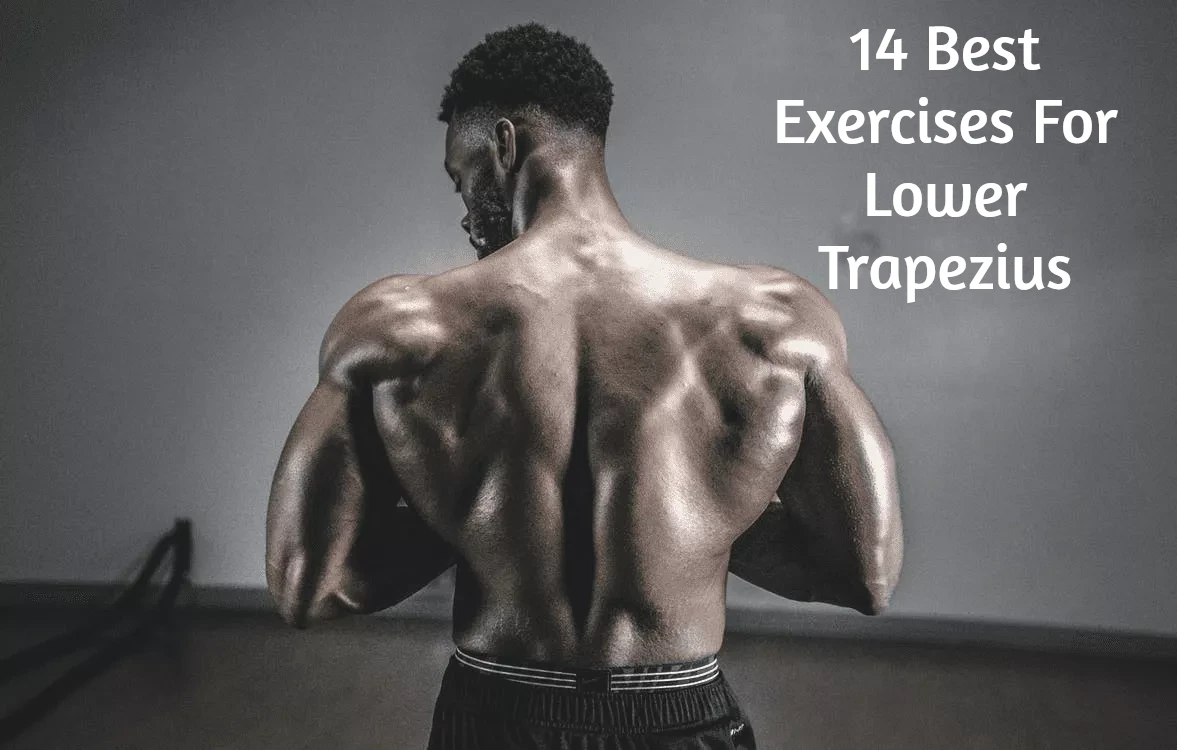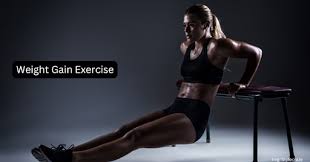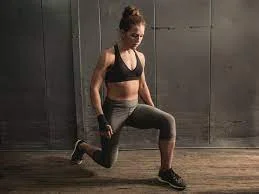14 Best Exercises For Lower Trapezius
Though the lower trap muscles are sometimes overlooked in exercise regimens, they are essential for enhancing functional fitness overall. Functional fitness, as we all know, is all about teaching your body to carry out daily tasks with ease. Your functional fitness can be greatly increased by lower trap workouts, which will improve your ability to lift, carry, and move objects with good form and technique.
Table of Contents
Developing your lower trapezius
Any exercise program should include strengthening your trapezius. This muscle helps the scapula (shoulder blade) move and remain stable.
- It appears that neither men nor women focus on strengthening their trapezius muscles (traps), either because they are unable to identify the muscle, do not recognize its significance, or are unsure of the proper exercises to conduct.
- You need to be able to depress and retract your scapula for maximal performance on your back and shoulders.
- If your lower traps are weak, you cannot accomplish this movement.
- For your back and shoulders to work correctly during an exercise, there must also be a balance between your lower traps, higher traps, deltoids (delts), and serratus (which connect the ribs to the scapula).
- The key takeaway is that weak lower traps can make other workouts, like the chest press, more likely to cause injury.
- Let’s examine how to improve and strengthen your lower traps in more detail.
Lower Trap Anatomy
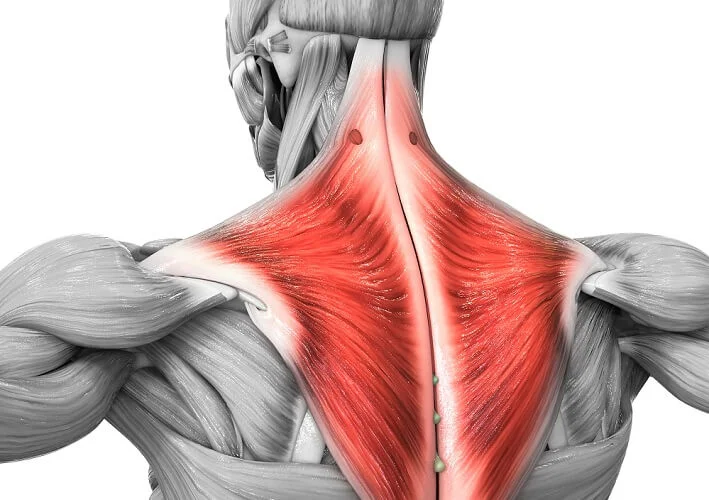
- Examining the scapula, depressing the scapula, downward tilting the scapula, and upward rotating the scapula are the four main actions of the trapezius and lower trapezius.
- As one may expect, scapula control and the mechanics of movement stabilization and control depend heavily on the lower taps.
- When performing overhead exercises like push presses, clean and jerks, overhead presses, or snatches, improper scapula movement can put the athletic shoulder at risk for impact, subacromial bursitis, and other injuries that can cause shoulder pain.
- A big surface muscle that resembles a trapezoid is called the trapezius.
- It begins in the occipital bone, travels laterally to the scapula’s spine, and descends to the lower cervical vertebrae.
- There are three sets of muscle fibers in the trapezius: upper, middle, and lower.
- However, strength movements that focus on the upper and middle traps are generally overlooked in conventional training programs.
What Are The Trapezius Muscles?
Three muscles in the upper back and neck region of the body are collectively referred to as the trapezius muscles. Together, these muscles maintain the movement of the shoulder blades and aid in head and neck stability. There are three areas in the trapezius muscles:
- The upper traps
- Middle traps
- Lower traps
Strengthening shoulder strength, general posture, and injury avoidance can all be positively impacted by strengthening these muscles through focused exercise. Any one of the three trapezius muscle portions neglected might result in imbalances and possibly injury. You should work on each area to develop a functional and well-rounded upper back and shoulder region. First, let’s examine the anatomy of each trapezius component.
Upper Traps
The function of the upper traps is to help extend the neck and raise the shoulders. In strength training exercises, they frequently receive attention since they are the most popular portion of the trapezius muscles. They facilitate the neck’s lateral flexion and rotation, and they extend from the base of the cranium to the top of the shoulder. They are frequently employed in workouts like upright rows and shoulder shrugs.
Middle Traps
The action of changing the shoulder blades towards the spine is carried out by the middle traps, which are situated in the space between the shoulder blades. This lowers the chance of shoulder injuries and helps with posture. The most popular exercise for targeting your middle traps especially is the row.
Lower Traps
The lower traps, which are found at the base of the shoulder blades, are in charge of pushing down and pulling back the shoulder blades. operating counter to the top trap’ intended purpose. This aids with strengthening and stabilizing the shoulders. They are frequently employed in exercises like the rear deltoid cable raise and the overhead farmer’s walk.
14 Best Exercises For Lower Trapezius
Rear delt cable raise

Steps To Follow:
- Attach a handle to the clip and lower one cable pulley to the machine’s last notch.
- With the cable pulley on your left, take a stand.
- With your right together, hold the handle with the palm facing up towards you, and choose a suitable weight.
- Maintain a small bend in your elbow.
- Once your torso is almost parallel to the floor, bend at the waist.
- With your left hand resting on your left thigh, your knees should be slightly bent.
- Let out a breath and extend your right arm until it is parallel to the floor and aligned with your right ear, slightly bent at the elbow.
- Maintain this posture for a single count.
- Take a breath, then gradually bring the handle back down to where you started.
- After 12 repetitions, swivel around so that the cable machine is on your right side, and use your left hand to complete the exercise.
Rope rear delt pull with scapular retraction

Steps To Follow:
- Attach a rope to the clip by elevating the cable pulley about two notches higher than your height.
- With your thumbs pointed in your direction and your hands facing down towards the floor, hold above the knots.
- Step back a few steps so that your arms are completely stretched and the cable is tight.
- To engage your core and stay balanced, maintain an erect lower back and gently bend your knees.
- With your elbows out, pull the rope in towards you, aiming for the bridge of your nose.
- Contract your shoulder blades together and hold this position for one count, allowing your elbows to straddle your back slightly.
- Take a breath, then slowly bring the rope back to your starting place. Your shoulders should elongate forward.
- Increase the weight after each set and repeat 12 repetitions for 4 sets.
Overhead farmer’s walk
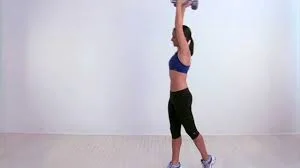
Steps To Follow:
- Holding a dumbbell or kettlebell above your head, maintain a straight arm, and thrust your palm forward.
- To remind yourself to stand up straight and use your core when walking, place your left hand on the inside of your rib cage.
- Get moving and walk.
- Maintaining a strong core and a downward and backward-facing shoulder blade is important.
- After 30 seconds or roughly 100 feet of walking, change arms.
Chin-up
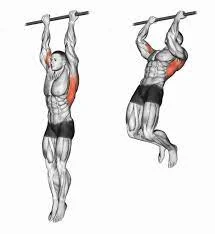
Steps To Follow:
- Keeping your palms facing you and a little closer than shoulder-width apart, grab a pull-up bar.
- With your feet crossing behind you and both knees bent at a ninety-degree angle, fully stretch your arms.
- Maintain an upright torso while raising your chest or forming a curve in your lower back.
- Take a deep breath out and raise your head above the bar.
- When performing this exercise, focus on activating your middle back and your bicep muscles.
- Keep your elbows as near to your body as you can as you raise yourself above the bar.
- Maintain this posture for a single count.
- Take a breath, then gradually return to your starting position until your arms are fully extended.
- Repeat 3 sets of 5 times.
High pulley cable row
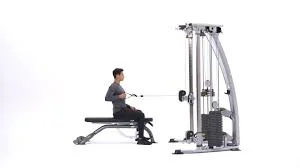
Steps To Follow:
- Connect two handles to the clip after raising the pulleys to the machine’s highest position.
- With one hand holding each handle and your palms facing each other, take a seat on a stability ball or bench.
- Sit up straight, engage your core, and extend your arms and shoulders forward.
- Lay your feet level on the ground, about shoulder-width apart.
- When the handles are outside of your chest, release your breath and row the handles inside towards you.
- Keep your elbows firmly planted at your sides and squeeze your shoulder blades together.
- Breathe deeply, stretch your shoulders forward, and slowly pull the wires back to where you started.
- Perform 4 sets of 12 repetitions, if possible increasing the weight after each set.
Standing Y raise
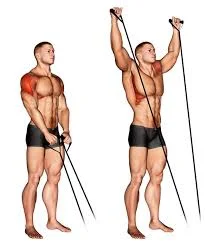
Steps To Follow:
- Lower both of the cable pulleys to the lowest notch.
- Grasp the handles with your palms pointing down towards the floor, crossing the cables to hold them taut.
- With your knees slightly bent and your core tight, take a centering position.
- To activate your shoulders, slightly pull the handles away from your thighs.
- Breathe out, then extend the wires over your head in a “Y” shape.
- When your biceps line up with your ears, the exercise should come to a close with your arms.
- Maintain this posture for a single count.
- Breathe in, then gradually lower the cables back to where you were before.
- Perform 3 sets of 12 reps.
Face Pull
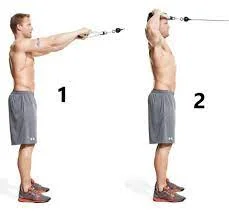
Steps To Follow:
- As you connect the cable pulley, make sure the pulley system is above your head.
- With the palms facing out, reach up and grab both rope handles.
- Take a step backward until your arms are straight out.
- Pull your abdominals in, tense your muscles, and incline your head back by 20 degrees.
- Engage your shoulders once you’ve pulled the rope just enough to begin raising the weight of the stack.
- Draw the rope’s handles towards the direction of your forehead.
- Squeeze your shoulder blades together to retract your scapula, then contract your back delts and traps.
- As your elbows flare outward towards the sides, maintain your palms pointing inside.
- Turn the exercise around and slowly extend your arms, being careful not to let your shoulders or chest roll forward.
- This will help you maintain proper posture the entire time.
Overhead Press

Steps To Follow:
- Traditionally, a barbell is used. It is placed in a rack about shoulder height.
- Step your feet shoulder-width apart, brace your abdominals, and lay a strong base.
- Hold the bar with your palm facing upward and your hands about shoulder-width apart.
- With the elbows pointing straight forward and the palms facing the ceiling, dip under the bar to remove it from the rack and let it rest across the top of the shoulders.
- Breathe out as you step back and in as you press the barbell straight overhead, maintaining a tall and straight back.
- Breathe as you return the bar across your upper shoulders.
- After the required number of repetitions, carefully restore the weight to the shoulders.
T-Bar Row
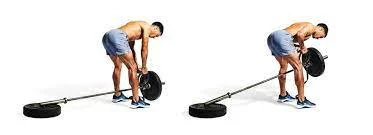
Steps To Follow:
- Give the t-bar machine a reasonable amount of weight to add.
- Step backward and place your feet shoulder-width apart on the footplate of the machine.
- Gripping the t-bar machine’s handles with your chest pressed down, shift to the exact spot right below you.
- Pull the t-bar row towards you while tightening and activating your core (similar to a bench press in reverse).
- At the height of the exercise, retract your scapulae and throw your elbows back while squeezing the blades of your shoulder together.
- Turn the exercise around and slowly extend your arms, being careful not to let your shoulders or chest roll forward.
- This will help you maintain proper posture throughout the entire exercise.
Good Mornings
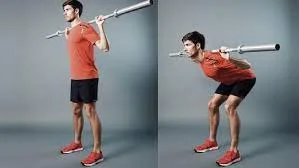
Steps To Follow:
- The straight-leg deadlift and good mornings are a lot like each other.
- Both movements work the hamstrings, but instead of lifting the weight off the floor, it is positioned above your neck and supported by your shoulders, much like in a barbell back squat.
- Using a barbell of moderate to lightweight, place it behind your neck on your upper traps, just above where you would put the barbell in a back squat at the squat rack.
- Step your feet shoulder-width apart, contract your core, and bend forward from the hips gradually until your trunk is roughly parallel to the floor.
- Stretch your hips and raise your weight back up to the starting position by pressing it through your heels and feet. Repeat.
- Use a weight that is only 20–25% of your back squat starting point.
Reverse Shrugs
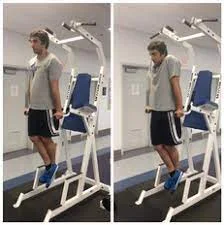
Steps To Follow:
- Step forward from the barbell with your feet shoulder-width apart at first.
- Using an overhand grip, place your hands shoulder-width apart and grasp the barbell.
- Raise your shoulders as high as you can while maintaining a straight arm position.
- Stop and squeeze
- To repeat, control the lowering to go back to the beginning position.
Cable Y Raise
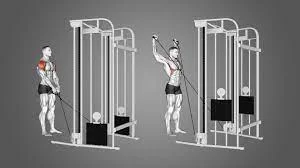
Steps To Follow:
- A cable crossover equipment’s low pulleys should have handles attached to them.
- Position yourself facing the pulley wires with your feet shoulder-width apart.
- Use the opposing hand to grasp each handle.
- To put a strain on the cables, take a step back.
- As you raise your arms up and out to form a Y shape with your torso, keep your elbows softly bent.
- At the end of the range, pause.
- Return to the starting position by lowering your arms with control, then repeat.
Straight Arm Dips
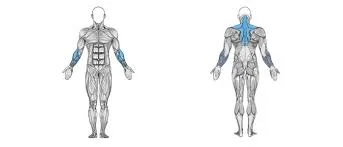
Steps To Follow:
- Consider that you are going to perform regular dips when you set up for this exercise on the parallel bars.
- Maintain a straight-arm posture rather than bending your elbows and shoulders.
- Let your body descend as far as it will go.
- Hold on. Then, bring your shoulders in and down, return your body to the starting position, and repeat, focusing on your lower traps.
Single Straight Arm Pulldowns
Steps To Follow:
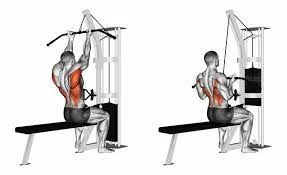
- A cable pulley should be adjusted to the machine’s top. Put on the handle and weight of your choice.
- Place your feet shoulder-width apart and bend your knees slightly as you stand in front of the cable.
- You may perform this exercise while standing straight or with your hips slightly pushed forward.
- To remove the weight from the cable stack, take a step back from the machine.
- Throughout the set, hold the postures of your shoulders, hips, and core.
- Pull the handle towards the direction of your hip by engaging your lats, maintaining a straight arm and back.
- When your arm is parallel to the rest of your body, stop.
- Repeat, controlling the return to the initial point.
Conclusion
Focused training of your lower traps will help build a solid core foundation for larger, more complex, and technically demanding strength training exercises.
Scapular retraction primarily activates the lower traps, which have a significant impact on posture, stability, and balance in addition to increasing strength and lean muscular mass.
FAQ
Why do Weak Lower Traps Predominate? Because the body is not in the optimal postural position for the low trapezius muscles to contract adequately, the lower traps may be weak. Such a mechanical disadvantage can result from kyphotic thoracic spines or from tight or short pec minor muscles.
One muscle that is crucial for both dynamic scapula stability and scapula movement and location is the lower trapezius. During humeral elevation, the subacromial gap widens due to the functional scapula motions of upward rotation, posterior tilt, and external rotation.
An exercise regimen designed to strengthen the lower trapezius is a useful and clinically significant way to improve postural alignment, muscular thickness, and the pace at which the lower trapezius muscle contracts.
The lower traps, which are found at the base of the shoulder blades, are in charge of pushing down and pulling back the shoulder blades. operating counter to the top traps’ intended purpose. This aids with strengthening and stabilizing the shoulders.
Any fitness regimen should be consistent, but it’s not a good idea to work out the same muscle group every day. Just like any other muscle, the lower traps require time to heal. Try to do two or three sessions a week, with at least one day off to ensure healthy muscle growth and recuperation.
References
- Hinchman, W., & Hinchman, W. (2022, February 17). 5 Best Lower Trap Exercises For Strength And Stability. Wolverine. https://swolverine.com/en-in/blogs/blog/best-lower-trap-exercises
- Z, T. (2023, April 26). 10 Lower Trap Exercises to Improve Posture & Stability. TRX Training – United States. https://www.trxtraining.com/blogs/news/lower-trap-exercises
- Cpt, K. M. (2018, September 29). Easy Exercises to Develop Your Lower Trapezius. Healthline. https://www.healthline.com/health/fitness-exercise/lower-trap-exercises#takeaway

